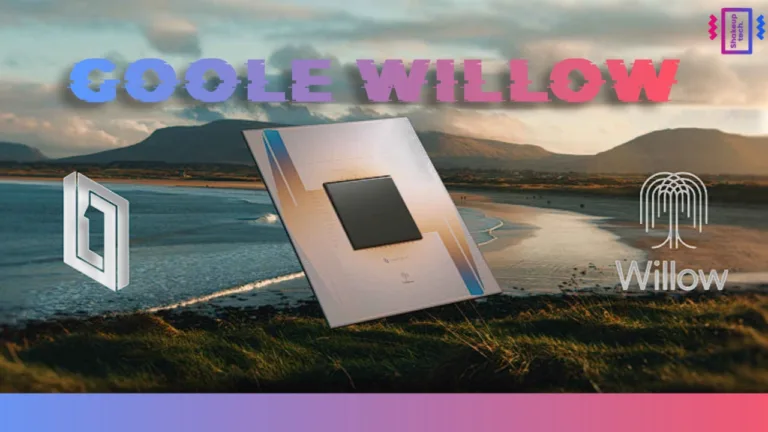Quantum computing has always fascinated scientists, engineers, and tech enthusiasts alike. It’s like stepping into a realm where problems are tackled by exploring countless solutions simultaneously. Inspired by the dynamic and ever-changing natural world, Google has introduced Willow, its latest state-of-the-art quantum chip. This innovation marks another giant leap in quantum computing.
Since Google’s journey into quantum hardware began in 2017 with Foxtail, followed by Bristlecone in 2018 and Sycamore in 2019, the milestones have been revolutionary. Now, with Willow, Google has once again pushed the boundaries, especially in solving otherwise unsolvable problems.
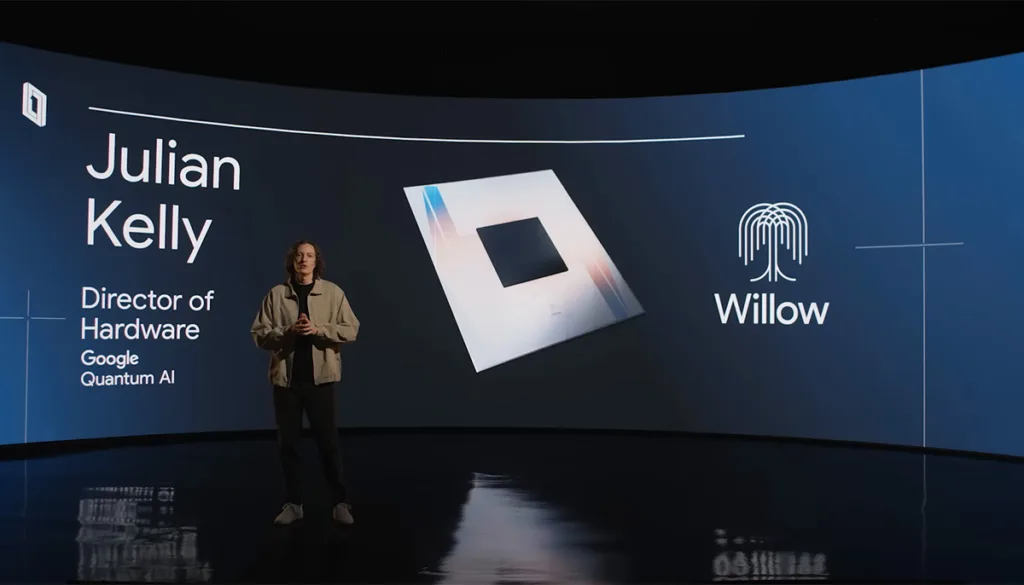
Willow – A Breakthrough in Quantum Coherence
One of the most striking features of the Google Willow Quantum Chip is its significant improvement in quantum coherence times. Coherence time refers to how long a qubit (quantum bit) can hold its state without decaying. Willow has improved fivefold, jumping from 20 microseconds in Sycamore to a staggering 100 microseconds. This might sound technical, but it’s a monumental achievement that allows the chip to execute far more complex computations reliably.
And here’s the kicker: this improvement doesn’t come with compromises. Google managed to maintain all the key features that made its previous chips so successful.
What Makes the Google Willow Quantum Chip Unique?
Willow isn’t just a step forward; it’s an engineering marvel. For starters, the quantum error correction capabilities have taken a massive leap. Willow now operates below the critical quantum error correction threshold, which was theorized decades ago but is only now being achieved practically.
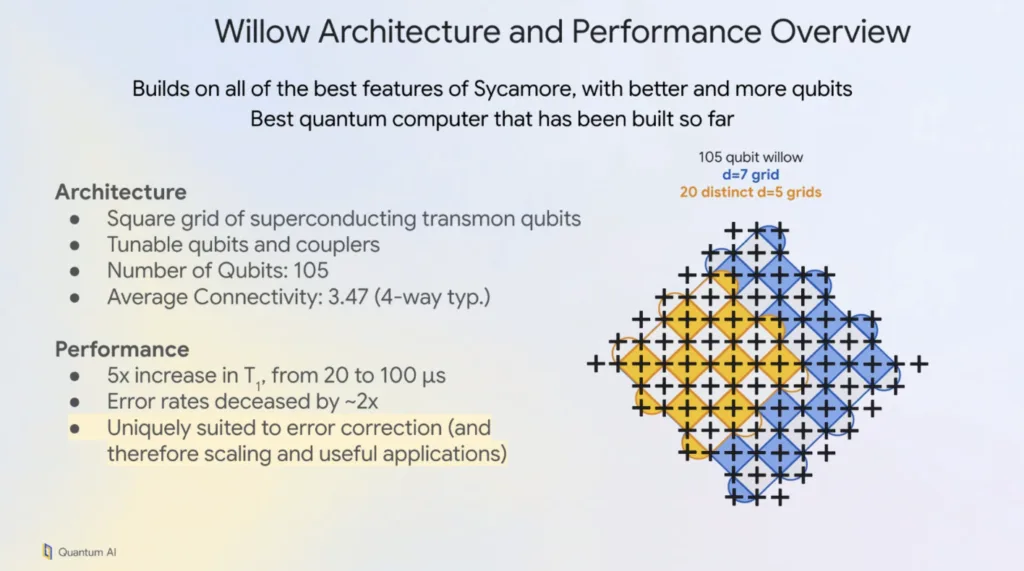
Moreover, as more physical qubits are added, the logical qubits (which combine multiple physical qubits) become more accurate. It’s like building a complex machine that gets more efficient as it grows bigger—an idea that once seemed impossible.
Google Willow is Beating Classical Supercomputers
The real-world implications of the Google Willow Quantum Chip are mind-blowing. For example, a task that would take the world’s fastest classical supercomputer an inconceivable 10^25 years (that’s a 1 with 25 zeros) is completed by Willow in under 5 minutes. Yes, you read that correctly. That’s the kind of computational power we’re talking about—a gap between quantum and classical computing that grows exponentially.
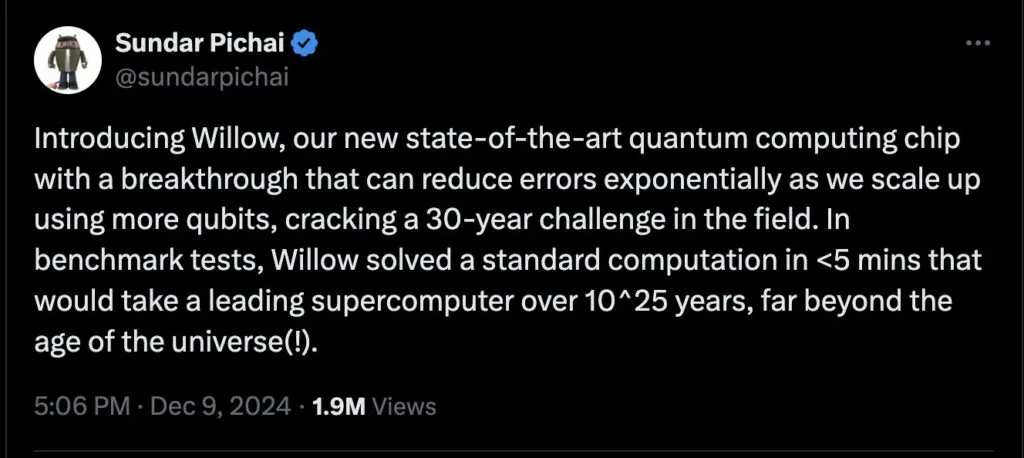
Hardware Innovations That Define Willow
To achieve this level of performance, Google has developed cutting-edge tunable qubits and couplers. These features allow Willow to:
- Perform ultra-fast operations with impressively low error rates.
- Reconfigure outlier qubits dynamically, ensuring consistent performance.
- Optimize hardware for specific applications in real-time.
What’s even better, Willow’s design is scalable. As researchers add more qubits and improve quantum error correction, the system doesn’t just maintain its performance—it gets better.
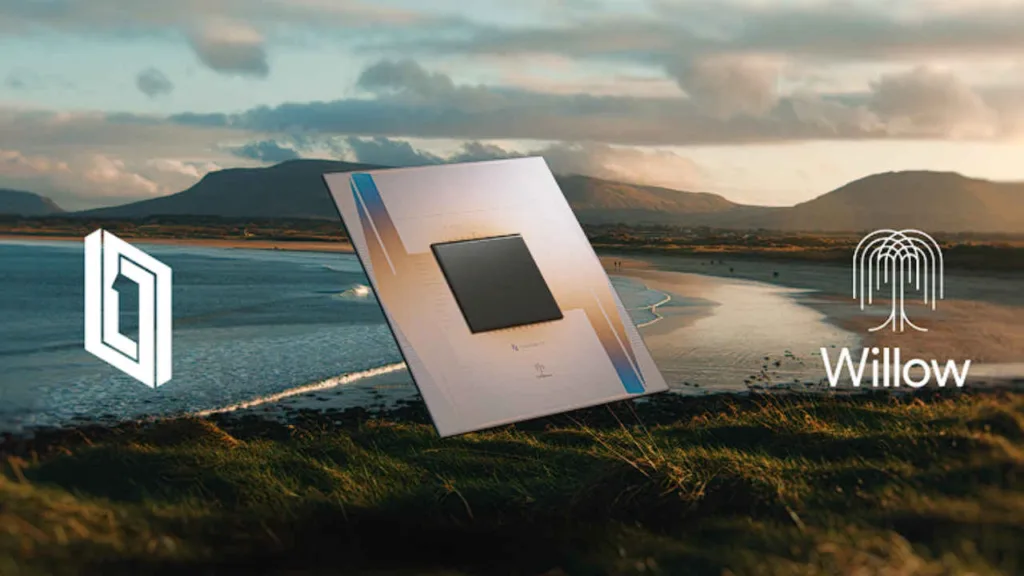
A Look Into the Numbers
For those who love the tech specs, Willow strikes an impressive balance across key metrics:
- High qubit connectivity: Each qubit interacts with multiple neighbours, allowing more complex computations.
- Error rates: Lower than ever before, thanks to advanced tunability.
- Coherence times: Longer lifespans for qubits to retain information.
- Measurement speed: Enhanced rates mean faster results.
It’s not just about the raw power, though. Willow’s performance in random circuit sampling—a benchmark used to measure quantum computing capabilities—surpasses anything achievable by classical computers today.
Real-World Applications and the Future
What’s next for the Google Willow Quantum Chip? The potential applications are vast. From developing next-generation pharmaceuticals to designing better batteries and even advancing fusion power. Quantum computing with Willow opens doors to innovations that were once confined to science fiction.
Google’s ultimate goal is to create large-scale, error-corrected quantum computers that tackle the biggest challenges in science and technology. With Willow, they’re one step closer to that dream.
Final Thoughts
Willow represents more than just a technological advancement—it’s a testament to human ingenuity. By breaking past barriers and setting new standards, the Google Willow Quantum Chip doesn’t just promise a better future; it shows us how close we are to achieving it.

